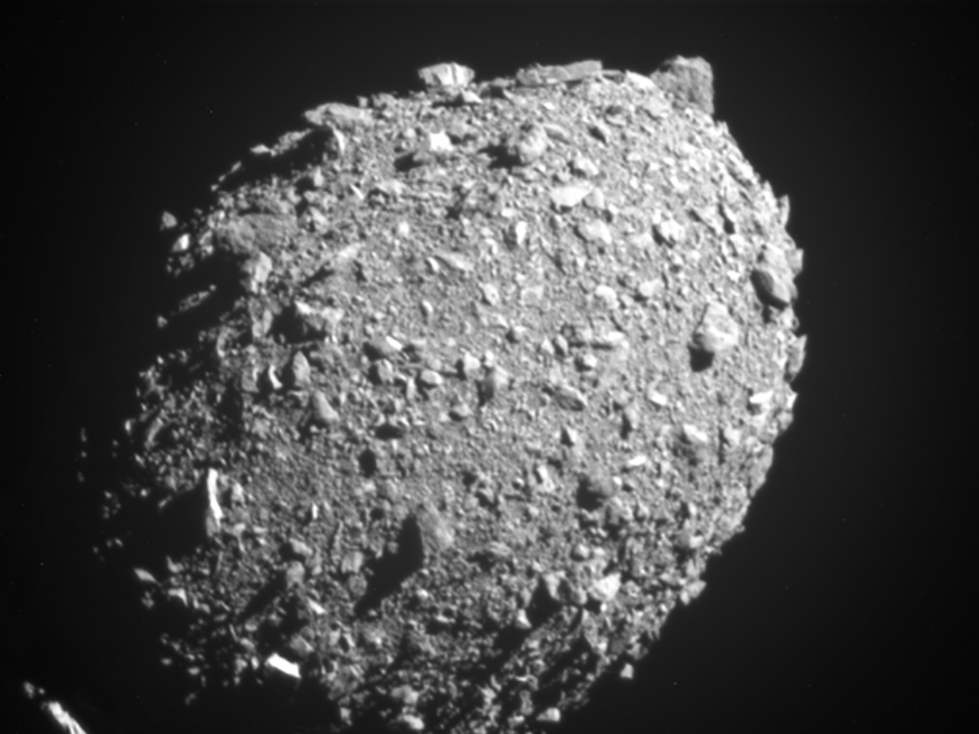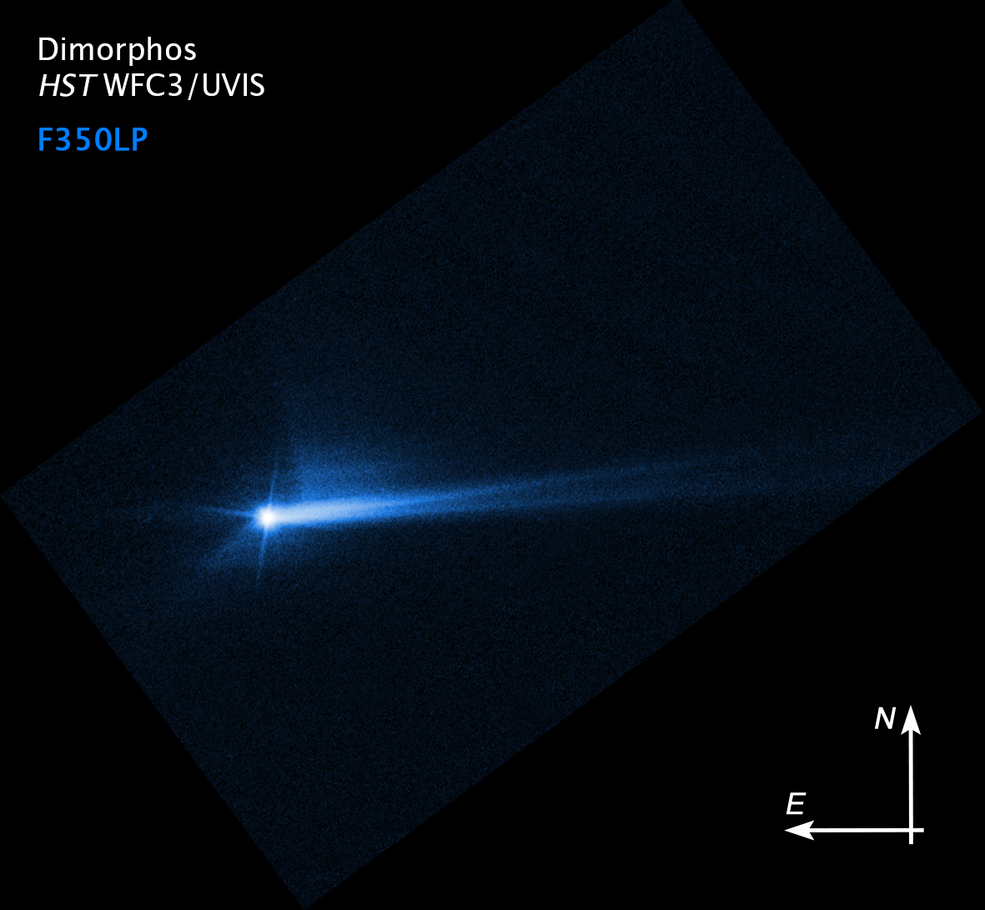The mission Double The Asteroid Redirection Test (DART) dropped a spacecraft onto the surface of an asteroid on September 26, while telescopes on Earth and in space watched the event. Today initial data from these observatories showed that DART achieved its goal.

Before the impact, asteroid Dimorphos took about 11 hours and 55 minutes to orbit its much larger asteroid companion, Didymos. The same journey today takes 11 hours and 23 minutes.
It's a huge milestone for the field of planetary defense, as it's officially been established that we can significantly alter the course of a potentially dangerous asteroid — especially if there's warning that one is on its way to hitting us.
Cutting half an hour off an asteroid's orbit is a huge victory for the mission, which would have counted even a 73-second turnaround as a success. Researchers believe one of the reasons for the large change in orbit is that the impact displaced tons of material. This "feedback" gave an extra push, Reported NASA.

There is still much that scientists need to understand to answer questions such as: Is there a new shape to the orbit? Did Dimorphos move? What damage was done to the asteroid when we hit it at 14.000 miles per hour?
Once the scientists have this information, they will try to run a model. they will take the information from the observatories and run it through physics simulations over and over again until they know very well what happened. That way, when the European Space Agency's Hera spacecraft reaches one system asteroids in a few years, researchers will know very well what they will find.
"All of this information is important to our understanding of what really happened. How effectively the impact changed her movement of the asteroid? How effectively was the momentum transferred? It's too early to tell; but there are a lot of moving parts in this calculation," said Tom Statler, DART program scientist at NASA, during a press conference.
However, as exciting as the first ones are Results since the DART mission, knowing how to move an asteroid is only one part of any future efforts to defend our planet from space visitors. The far more important issue is knowing the dangers that are out there very early
A similar "little nudge" on a potentially dangerous asteroid might be enough to keep it out of Earth's path, but timing would be crucial. “If we want to do it in the future, it could potentially work. But we should do it years earlier. "Warning time is very key here," Chabot said.
"The single most important factor we need to know is which of these objects are potentially dangerous and when they might be potentially dangerous," said Lori Glaze, director of NASA's Planetary Science Division.
NASA also has the Near-Earth Object Surveyor mission, which specifically looks for such hazards. However, this mission has recently faced funding difficulties in the congressional budget, although it is considered a top priority priority for the planetary science community.





